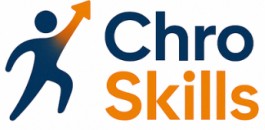
The Importance of Organizational Culture Inventory
Gauging the Impact of Measuring Cultural Attributes
Understanding the intricacies of an organization's culture is essential for HR leaders aiming to enhance their team's performance and drive effective change. The Organizational Culture Inventory (OCI) serves as a pivotal tool in this endeavor by offering a comprehensive cultural assessment. This inventory provides HR professionals with a clear view of the current behavioral norms and values that permeate their organization. The OCI operates on the principles outlined in the Human Synergistics Circumplex Model, which categorizes organizational cultures and assesses their effectiveness. By identifying discrepancies between the current culture and the ideal culture, leaders can pinpoint areas that require transformation. These insights facilitate strategic alignment, enabling HR to craft policies and initiatives that resonate with corporate objectives. Organizational effectiveness hinges on the congruence between cultural norms and the desired corporate culture. A thorough cultural assessment not only helps in managing cultural change but also enhances long-term organizational performance. It ensures alignment with strategic visions and supports cultural change efforts by fostering an environment where cultural norms embody the organization's ideal values. For those navigating the complexities of HR leadership and seeking to leverage organizational culture for improved team dynamics, it's crucial to delve deeper into the challenges and opportunities presented during cultural transformations. This understanding forms the foundation for addressing issues of change and implementing sustainable cultural shifts. For more insights on tackling these challenges, consider exploring the unique obstacles faced by HR leaders in managing organizational culture change.Core Skills for a Chief Human Resources Officer
Essential Qualities for Effective HR Leadership
In today's ever-evolving business landscape, the role of the Chief Human Resources Officer (CHRO) is crucial in shaping and sustaining an organization's culture. To drive cultural change and enhance organizational effectiveness, a CHRO must possess a variety of core skills and traits that align with the culture assessment objectives.
One of the pivotal skills for a CHRO is strategic vision. This involves understanding both the current culture and the ideal culture desired for the organization, and setting long-term goals to bridge this gap. Strategic vision requires the ability to comprehend organizational needs, foresee challenges, and develop actionable plans in alignment with the overarching corporate culture.
The CHRO should also excel in change management. Facilitating cultural transformation involves continuous assessment of behavioral norms and effectiveness, as outlined in tools like the organizational Culture Inventory (OCI). Change management expertise allows the CHRO to guide teams and management through transitions, thereby fostering a supportive environment for all members involved.
Another essential quality is strong communication skills. As the liaison between leadership and team members, the CHRO must articulate cultural ideals and expectations clearly and persuasively. This involves active listening and engaging in dialogues that promote understanding of the cultural assessments and organizational norms.
Leadership abilities are central to the CHRO's responsibilities. They must inspire and motivate teams to commit to cultural shifts, leveraging human synergistics and the circumplex model to gauge performance and effectiveness. A competent CHRO utilizes these insights to coach and mentor team members, enhancing both individual and collective performance.
Finally, a solid grasp of organizational policies and compliance with cultural norms ensures the CHRO can sustain an effective culture change process. This also involves interpretation of cultural assessments' results to modify and implement policies that support the desired organizational culture.
These core skills equip a CHRO to steer organizations toward an ideal culture while ensuring all team members align with the corporate culture and its evolving norms. By mastering these skills, the CHRO plays a pivotal role in cultivating a thriving and adaptable organizational environment.
Aligning HR Strategies with Organizational Culture
Strategically Integrating HR Plans into Organizational Culture
Aligning HR strategies with the overall organizational culture is an essential yet complex task for chief human resources officers (CHROs). The harmony between the human resources policies and the company’s cultural framework plays a pivotal role in driving organizational effectiveness. The Organizational Culture Inventory (OCI) serves as a valuable tool in this alignment process. To successfully integrate HR strategies with corporate culture, CHROs must:- Conduct Comprehensive Cultural Assessments: Understanding the current culture, behavioral norms, and cultural assessments using tools like the OCI can provide insights into where the organization's culture stands and where it needs to go.
- Focus on Ideal Cultural Norms: By leveraging the circumplex model, HR leaders can design strategies that move the organization towards its ideal culture. This involves identifying the cultural traits that align with the organization’s goals and values.
- Involve Team Members for Culture Change: Engaging team members in the process of cultural change is crucial. Encouraging their input and emphasizing the importance of cultural norms can enhance the engagement and effectiveness of the change effort.
- Promote Leadership Support: For cultural change to be successful, strong and active leadership backing is essential. Leaders must embody the ideal cultural attributes to encourage organization-wide adoption.
- Implement Long-term Strategies: Rather than quick fixes, focus on long-term strategies that steadily drive cultural change. This ensures sustainable progress in improving organizational performance.
Using Organizational Culture Inventory for Talent Management
Leveraging Culture Inventory in Talent Management
Effectively utilizing the Organizational Culture Inventory (OCI) can transform talent management practices within an organization. The OCI offers a comprehensive culture assessment that aids HR leaders in identifying the current culture compared to the ideal culture. This clarity on organizational culture norms, behavioral norms, and cultural values plays a crucial role in formulating strategic HR plans. By conducting a thorough cultural assessment, organizations can determine whether their current norms support organizational effectiveness or if they inhibit it. This understanding enables HR teams to align recruitment strategies with the ideal culture, ensuring that new hires possess the right cultural fit. Cultural assessment also guides leadership in designing development programs that enhance team performance and drive culture change. Moreover, the insights gained from the culture inventory empower management to develop performance metrics that reflect the organizational norms. In long-term planning, aligning these metrics ensures consistent evaluation of how well the organization adheres to its ideal cultural standards. Implementing the OCI not only facilitates informed decision-making but also fosters a culture of continuous improvement. The Human Synergistics' circumplex model, integral to the OCI, provides a visual representation of culture that assists in identifying areas needing change. This creates a foundation for sustainable cultural change and boosts overall organizational effectiveness by aligning human resource management with the desired cultural direction. In practice, many organizations have leveraged their cultural insights to successfully manage talent. These insights are pivotal in fostering an environment where team members thrive, leading to heightened morale and retention, ultimately enhancing corporate culture. However, organizations must be prepared to face challenges as they strive for cultural alignment. Keeping an open dialogue with team members and fostering transparency aids in overcoming resistance to change, ensuring that the shift toward an ideal culture is smooth and effective.Challenges in Implementing Organizational Culture Changes
Overcoming Hurdles in Cultural Transformation
Understanding and managing organizational culture can be quite challenging, particularly when changes are necessary to align the current state with the ideal culture envisioned for the organization. Implementing cultural changes requires strategic and informed efforts from HR leadership, utilizing tools such as the Organizational Culture Inventory (OCI). Cultural assessments through inventories like OCI often reveal discrepancies between the current and ideal cultures. This assessment thus sets the stage for necessary interventions. However, achieving effective change is not without its challenges:- Resistance to Change: One major obstacle is the inherent resistance to altering established cultural norms and behavioral patterns. Team members may be hesitant to abandon their familiar routines and embrace new norms, even if the changes aim to improve organizational performance.
- Communication Barriers: Clear communication is key to overcoming these obstacles. HR leaders must adeptly convey the importance of cultural shifts to all organizational members. This means painting a clear picture of how these changes enhance the overall effectiveness and viability of the organization.
- Ingrained Norms: Organizational and cultural norms often become deeply embedded within corporate structures. These norms require a concerted effort to change, involving all levels of leadership and meticulous, sustained initiatives to ensure alignment with corporate objectives.
- Sustaining Momentum: The process doesn’t end with implementation. It involves continuous assessment and tweaking to ensure that momentum is not lost and that organizational effectiveness is steadily improved. Long-term commitment from all stakeholders is crucial to navigate through potential setbacks.
- Measurement of Effectiveness: An often-overlooked aspect is the continuous measurement of the effectiveness of these changes. Regular culture assessments allow organizations to take stock of progress in moving towards their ideal culture and tweak strategies accordingly.













